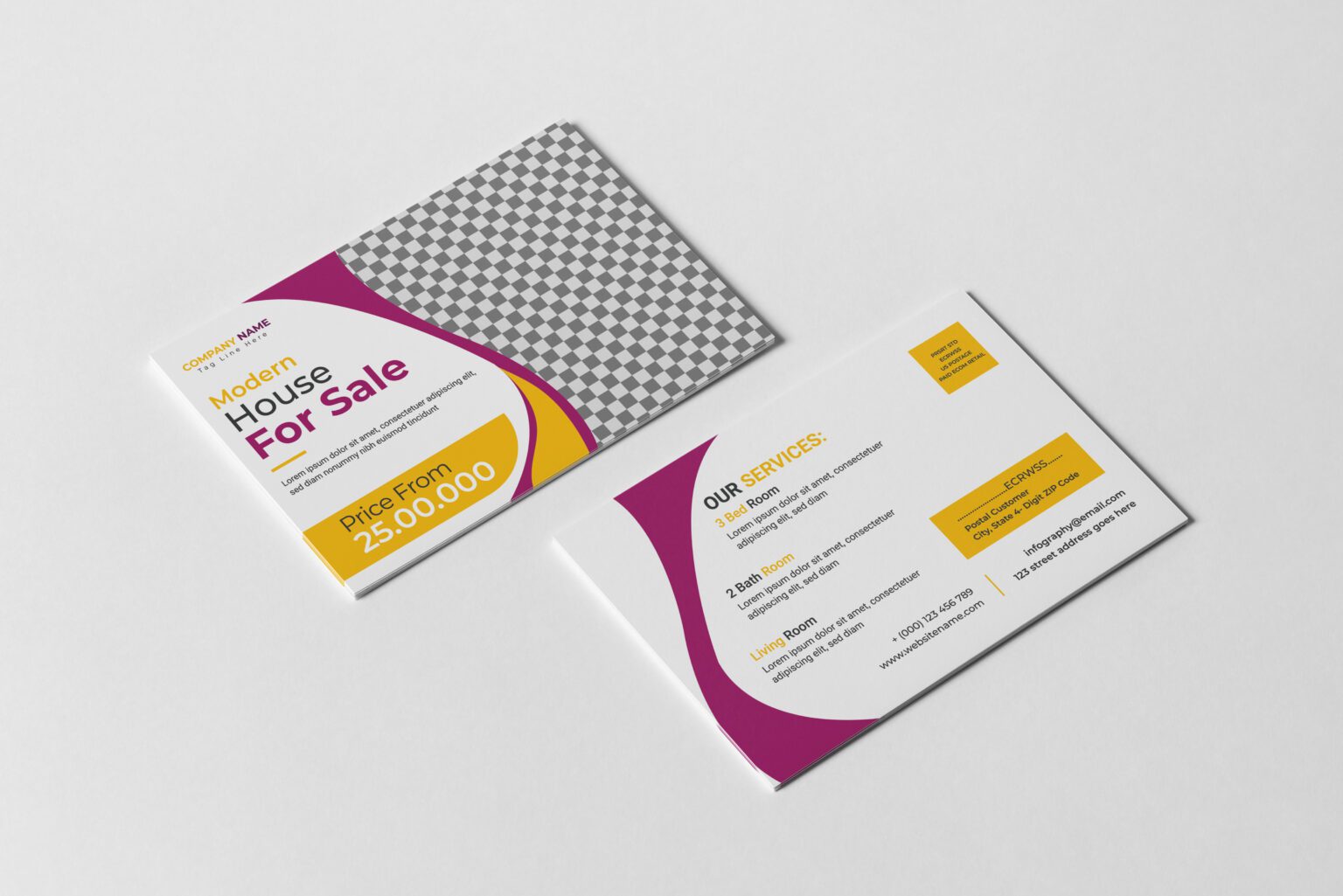It’s true that most marketing efforts today are executed using digital platforms, such as emails, social media, video ads, Internet searches, etc. However, effective real estate marketing is implemented not only through digital means, but also through time-tested printed media.
It’s essential to take advantage of all the opportunities online, but it’s also important to continue making printed advertisements as a part of real estate marketing. After all, a great marketing strategy harnesses the power of digital and printed media.
One of the most effective and powerful printed marketing media at your fingertips is the plain yet elegant postcards. These are a cost-effective strategy for real estate professionals, giving them access to short and long-term positive results. However, in today’s digital era, will a simple postcard make a change in real estate? Well, the truth about real estate postcards is that when created perfectly, they’ll be able to drive traffic, increase call volumes, and boost website registrations.
But, how do you create a real estate postcard that encourages people to respond? Here are some of the most effective ways to generate positive responses from the postcards you send out:
1. Identify Your Target Audience
These days, the average price of a typical postcard may cost you around USD$0.75 (including the printing and mailing fees). Therefore, it’s quite expensive to mail postcards to people who’ll most likely ignore what you promote, such as recent property buyers.
Also, if you’re sending hundreds of postcards at the same time, you might be wasting hundreds of dollars that could’ve been utilized to execute other projects. This is why it’s important to identify your target audience before you send your direct mail postcards to your recipients.
Identifying your target audience will help ensure that your marketing efforts will be delivered to the right person at the right time. Also, it’ll be best to segment them based on certain criteria, allowing you to send your emails effectively.
Here are the criteria you might want to consider when segmenting your prospects:
- Geographical location
- Income and forecasted budget
- Needs (residential, commercial, or industrial)
- Preferences
- Purchasing history (recent buyers may not be a good market)
Once you’ve identified and segmented your audience, you’re ready to send your real estate postcards and wait for upcoming responses from your recipients.
2. Create A ‘Just Listed’ Postcards
‘Just listed’ postcards are one of the cornerstones of effective real estate postcard campaigns. This is one way to announce the recent properties available in the market. They often showcase luxurious and unique properties that grab the interest of potential buyers.
For attractive ‘just listed’ postcards, make sure to include the following details:
- Images of the house, including its functional areas, such as the living room, kitchen, and outdoors
- Listing price
- Key information about the house, including the number of bedrooms and bathrooms, lot and floor area, and car garage
- Special areas, like swimming pools, lanai, backyard, etc.
- Contact details of a realtor, including name, email, personal phone number, and company phone number
- Reviews (optional but helpful in building client trust)
Furthermore, you may include at least three houses in one postcard to give your clients different options. The more houses they see, the higher the chances of closing a deal.
3. Create ‘Just Sold’ Postcards
‘Just sold’ postcards function similarly to ‘just listed’ postcards. But, instead of featuring new properties up for grabs, they showcase those that have been recently purchased. However, if a property just got sold, what’s the purpose of telling it to your prospects?
By sending just sold postcards, people will think you’re a reliable and trusted real estate partner. Also, this is a way to show that you’re an expert in your field, knowing that it’s quite difficult to land a sale in the real estate industry.
‘Just sold’ postcards look similar to ‘just listed’ postcards. However, you have to elaborate on why the house got sold. This will attract potential buyers to learn more about the other properties you offer.
Examples of details you might need to include to grab the attention of your prospects include:
- Showing refurbished and renovated areas of the house
- The message of gratitude from the buyer
- The number of days before the house gets sold
- Location of the house
- The price the house is sold
4. Send Update Postcards
Update postcards provide information about the current status of the real estate market. Usually, they represent statistics of a specific and localized location, and include key details such as:
- The average sale price of properties
- Sold to list price ratio
- Success rate
- The average listing price
- The average days the house spends on the market
- Total number of properties for sale
- Number of ‘just listed’ properties
But, why is it important to send such details? Potential buyers are highly interested in this kind of postcard. It helps them make important decisions, whether or not to purchase a property in a specific location.
Furthermore, by sending postcards showing market updates, you present yourself as a reliable expert in the field.

5. Create Farming Postcards
These postcards help generate leads and focus on addressing the potential pain points of your target audience. Usually, farming postcards contain questions that are most likely to be asked by your recipients that you can solve.
Here are some examples you can use:
- Thinking about selling your home? Find out what your home is worth now!
- Want to know the values of properties in your neighborhood? Call us now!
- Tired of renting? Let me show you how easy it is to own a home.
- Trying to find a home or sell your own?
- Looking for a good business location?
These are some of the most common questions on a farming postcard. Before you ask your target audience, ensure the question fits their needs. For example, if they just bought a new home, they might be interested in selling their previous property. If that’s the case, you may ask them questions, like “Want to sell your home?” And, if they’re interested, they won’t hesitate to call you right away.
Final Words
Postcards are one of the most effective marketing campaigns real estate professionals use to market properties and land a sale. For a postcard that yields positive responses, you may consider following the tips discussed earlier.
Above all these, make sure to identify and segment your target audience before sending your postcards. This will help you prevent wasting your money by sending postcards to people who might not be interested in your offering. After all, every postcard has a price tag.
If you have more questions regarding a property you want to purchase or sell, this is the right time to consult a local real estate agent or realtor for expert advice.


